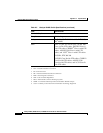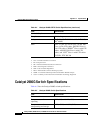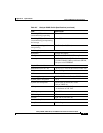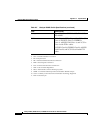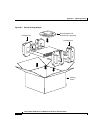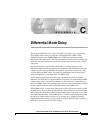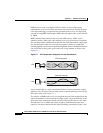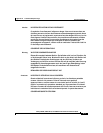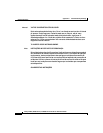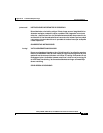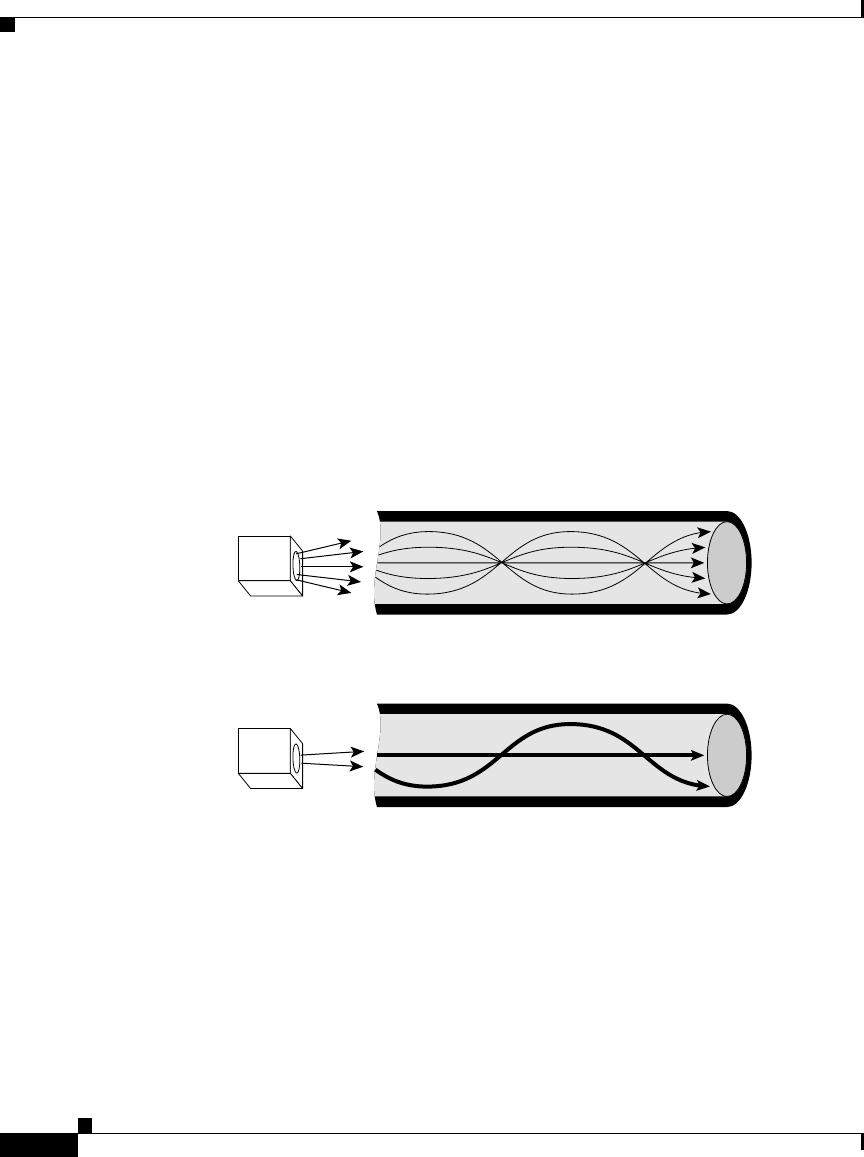
Appendix C Differential Mode Delay
C-2
Catalyst 2984G, 2948G-GE-TX, and 2980G Switch Hardware Installation Guide
78-6286-05
DMD does not occur in all deployed fibers; rather, it occurs with certain
combinations of worst-case fibers and worst-case transceivers. Gigabit Ethernet
is the first technology to experience this problem because of its very high baud
rate and its long MMF cable lengths. SMF cable and copper cable are not affected
by DMD.
MMF cable has been tested for use only with LED sources. LEDs create a
condition within a fiber-optic cable referred to as an overfilled launch condition.
The overfilled launch condition describes the way LED transmitters couple light
into the fiber-optic cable in a broad spread of modes. Similar to a light bulb
radiating light in a dark room, the generated light that shines in multiple directions
can overfill the existing cable space and excite a large number of modes. (See
Figure C-1.)
Figure C-1 LED Transmission Compared to Laser Transmission
Lasers launch light in a more concentrated fashion. A laser transmitter couples
light into only a fraction of the existing modes or optical pathways present in the
fiber-optic cable. (See Figure C-1.)
The solution to DMD in this case is to condition the laser light launched from the
source (transmitter) so that it spreads the light evenly across the diameter of the
fiber-optic cable, making the launch look more like an LED source to the cable.
The objective is to scramble the modes of light to distribute the power more
equally in all modes and prevent the light from being concentrated in just a few
LED transmission
Laser transmission
12871
LED
Laser



